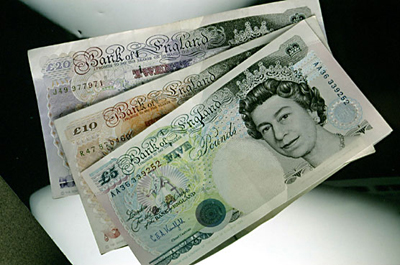Monday, 16 March 2015 21:30
 LONDON: Sterling pulled away from a five-year low against the dollar on Monday as investors turned cautious before a Federal Reserve meeting this week that will test bets on a mid-2015 U.S. interest rate rise.
LONDON: Sterling pulled away from a five-year low against the dollar on Monday as investors turned cautious before a Federal Reserve meeting this week that will test bets on a mid-2015 U.S. interest rate rise.
The Fed’s rate-setting Open Market Committee (FOMC) begins a two-day meeting on Tuesday and expectations have been growing that it will point towards a June rate rise by dropping a pledge to be “patient” in considering such a move.
But with a dollar that has gained around 20 percent against a basket of major currencies over the past six months, some investors are questioning that.
Sterling moved 0.4 percent higher on Monday to trade at $ 1.4792 as the dollar fell across the board.
“No one is doing a thing ahead of the Fed,” Commerzbank senior currency strategist, Peter Kinsella, said. “But from a technical perspective, we broke pretty important levels last week and that opens up a move towards $ 1.42.”
Sterling hit a five-year low of $ 1.4699 on Friday, depressed by comments from Bank of England (BoE) Governor Mark Carney signalling that he was in no hurry to raise interest rates. The pound’s recent gains against the euro can keep inflation low and therefore the BoE can put off rate hikes, he said.
Traders will look closely on Wednesday at UK earnings data, which the BoE has said is an important factor in its considerations on when to raise interest rates.
“If the earnings data comes in better than expected, that would be as good an excuse as any to buy the pound against the euro and the dollar,” Credit Agricole’s European head of FX strategy, Adam Myers, said.
Against the euro, sterling was 0.4 percent lower at 71.515 pence, not far from a seven-year high of 70.145 pence touched last week as the European Central Bank’s 1.1 trillion euro bond-buying programme got under way.
A parliamentary election in less than two months, whose outcome is the most uncertain in decades, are beginning to weigh on sterling. Investors have begun hedging against sterling price swings in the vote’s aftermath, with the cost of two-month implied volatility reaching a 3-1/2-year high.
Copyright Reuters, 2015


























